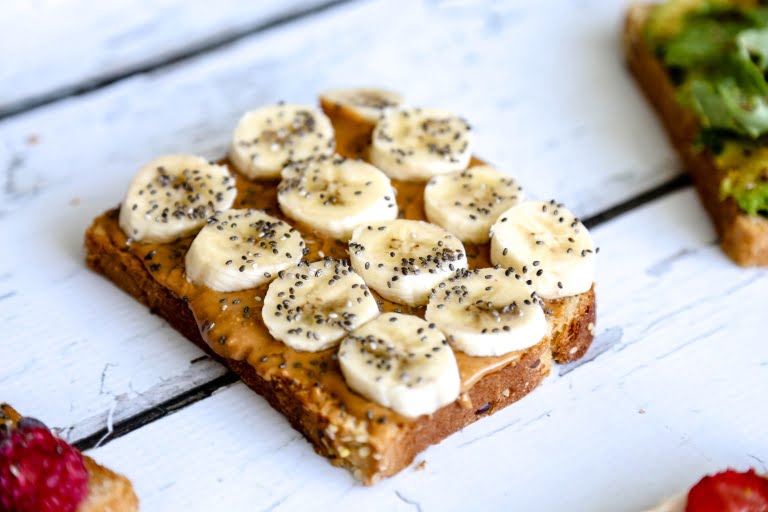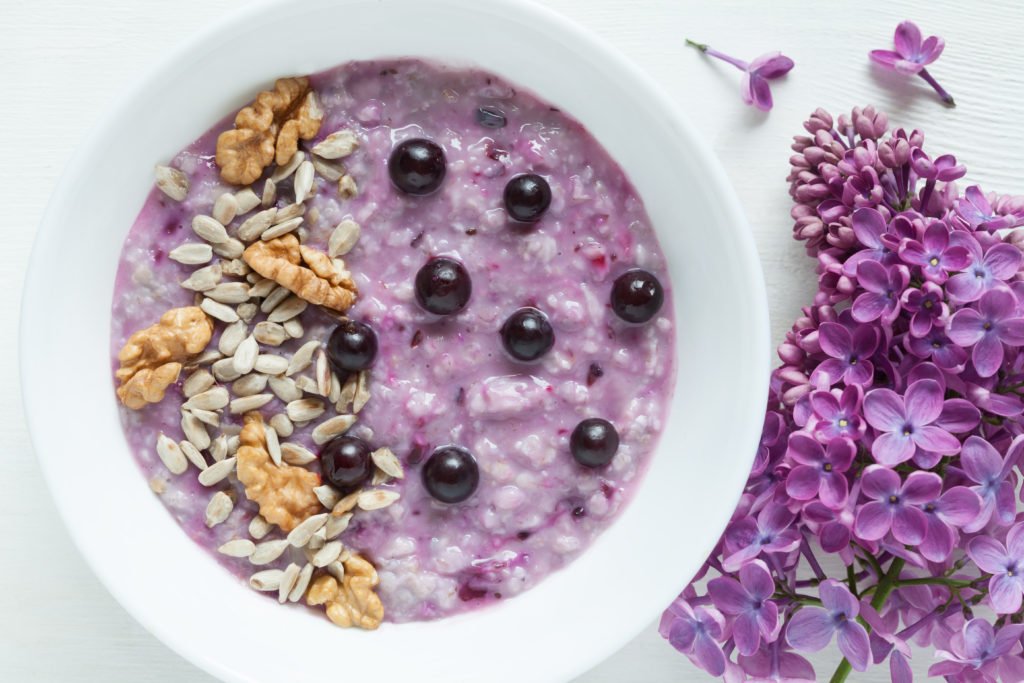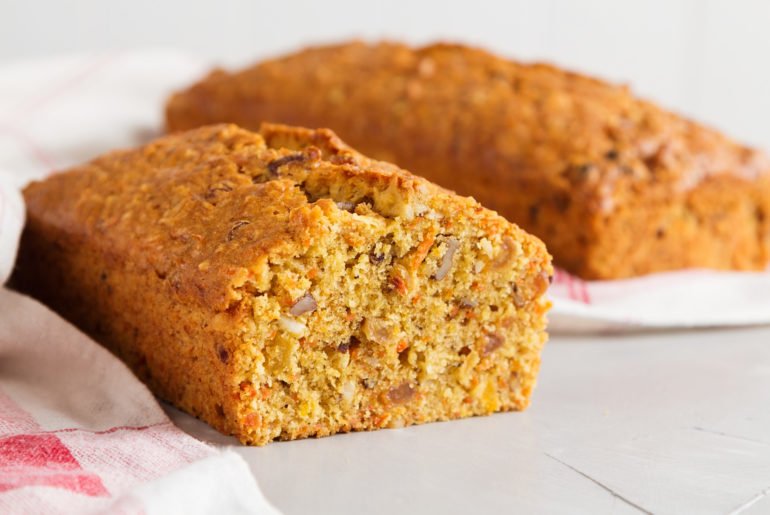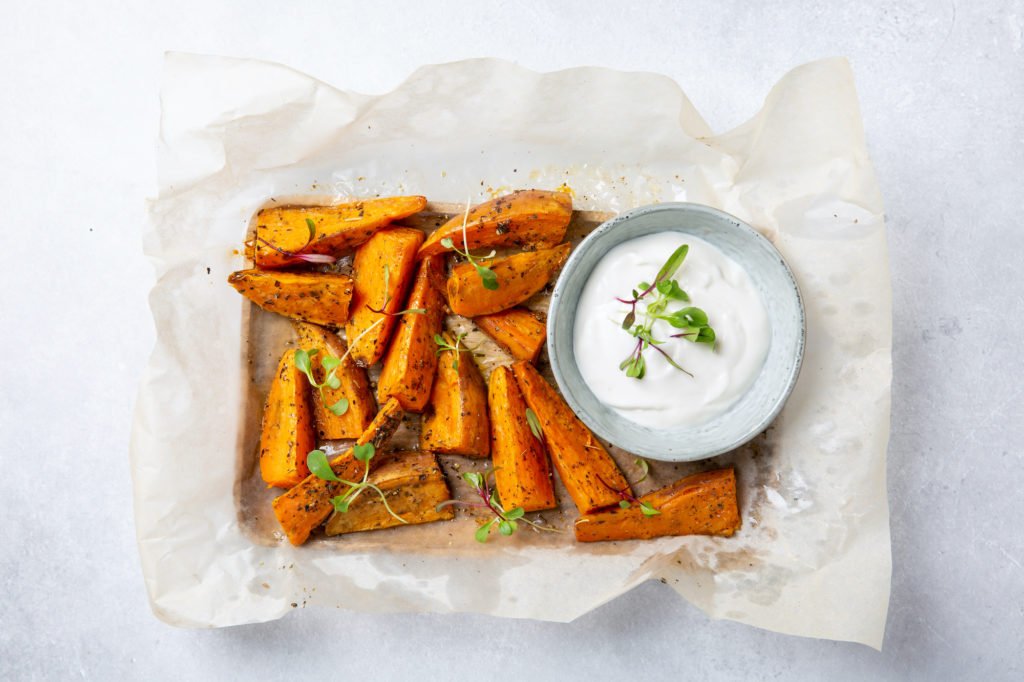Week 1 & 2: Fat adapt
Low carb
Eat 50-100g carbs per day (see table below)
- Avoid sugary drinks, juice and milk
- Don’t always count every gram, but figure out which meals
Protein
Have 1g of protein per kg of body weight (e.g. 70g protein if you weigh 70kg)
- Have protein with every meal
3 Meals
Eat 3 main meals each day
- General admission and member discounts for two adults
- Five free tickets per special exhibition
- Six single-use guest passes per year
| Week 1-2 summary |
| – Eat 20-60g carbs per day (see table) – Have 1g of protein per kg of body weight (e.g. 70g protein if you weigh 70kg) – Eat plenty of natural fats from foods such as fish, meat, seafood, nuts and seeds – Cook with heat stable fats (coconut oil, butter, avocado and rapeseed oil) – Fill half your plate with vegetables for fibre (in the low carb table) – Eat only when hungry, and eat until you feel full – Have 3 meals per day and 1 snack – Only have alcohol on one night per week – no more than 6 units on this day – Avoid sugary drinks – Burn through 2000 calories at the gym in the first week to empty your carb stores |
Low carb to kick start fat burning
For the first 2 weeks we will be encouraging your body to adapt to burn fat as its primary source of energy. As your body either burns carbohydrates or fat, we will achieve fat burning by following a low carbohydrate diet. Carbs will be slowly introduced later on in the plan as they are important for keeping your metabolism high and a lot easier on your social life, but low carb is the most effective way to kick start fat loss.
What is a carbohydrate?
We’ve all heard of carbohydrates, fats and protein (I hope!) but when you come to think about it, what exactly is a carbohydrate?
Carbohydrates are the sugars, starches or fibres found in foods. Glucose and fructose are examples of simple carbohydrates which give cake and fruit their sweet taste.
A lot of savory foods including crisps and bread are also high in carbohydrates, consisting of chains of glucose molecules connected together. These are the forms which don’t taste sweet on the tongue, but once they break down in the body and the glucose molecules separate, they effectively act the same as sugar.
White bread = sugar, once digested
Carbohydrates can be derived from ‘healthy foods’ such as fruit and porridge, or from refined unhealthy foods.




The fat storing hormone – insulin
Carbohydrates have a huge impact on insulin levels in the body, a hormone made in the pancreas when glucose is raised in the blood. This release of insulin pulls glucose out of the blood stream and into your hungry cells, either to be used as energy or to be stored as fat. As we are not always active after a meal, carbohydrates are often stored as fat, hence the term, ‘the fat storing hormone’.
Refined carbs such as biscuits, white bread and crisps are broken down very quickly, so they spike your blood sugar and therefore result in a high surge of insulin. The more refined the food is, the more it triggers your fat storing hormone!
When consuming refined carbs, your blood sugar levels will initially rise steeply, but then after insulin is released, this blood sugar level will drop. Eating like this throughout the day can cause a blood sugar roller coaster, and each time your blood sugar is low, you may feel hungry, crave carbohydrates and have low energy.
These fluctuations in blood sugar and dependence on carbohydrate-based foods for energy results in your body being fully in the ‘sugar burning’ mode. With this way of eating, your body is unable to tap into your body fat stores for energy. A diet high in carbohydrates will increase hunger and cravings for more.
Let’s reduce your hunger hormones
Rather than worrying about calories, it’s much easier to concentrate on reducing your appetite. Insulin and ghrelin are the two hormones impacting your hunger the most.
Insulin – fat storing hormone
Insulin we already know is closely related to carbohydrate intake, in particular simple sugars and refined carbs (e.g. chips and crackers) and fluctuations can significantly increase your appetite. In this plan we will be reducing carbs initially to help with this. Fats and protein have very different effects in the body. Fats have quite a neutral impact on appetite and are very satisfying. Protein is well known for its ability keep you satiated for a long time after a meal, keeping appetite under control. Aim to have 1g of protein per kg of body weight to keep your appetite low between meals e.g. if you weigh 70kg, aim to eat around 70g of protein each day.
Ghrelin – hunger hormone
Ghrelin is the main hunger hormone, like a little gremlin giving you a rumbling stomach when you haven’t eaten much. Ghrelin is also increased significantly when you reduce calories over time, to try and get your body fat back to where it was before. This is another reason why drastically cutting calories makes fat loss so difficult! Instead, try to listen to your body’s hunger signals. Only eat when you actually feel hungry (not just because it’s meal time) and finish eating when you feel full. Eating slowly and chewing your food properly can also help your stomach to register when it is full sooner.
How to empty your carb stores
Your body is either burning glucose or ketones for fuel (ketones are derived from fat, so I will say fat to keep things simpler). We all know that our bodies store fat, so we have an abundance of this type of energy, but our bodies also store carbohydrates.
An average sized healthy adult can store about 500g of carbohydrate as glycogen. Muscles store about 400g of glycogen, the liver stores about 100g of glycogen and your blood circulates roughly 25g as glucose. If you empty these carbohydrate stores, your body then has no choice but to turn to your body fat as it’s source of energy.
500g of glycogen is equivalent to 2000 calories. Within the first week of your plan, aim to burn through this 2000 calories worth of glucose at the gym, 3-4 intense workouts depending on your body size.
If you are eating low carb during this week and you manage to empty your glycogen stores, this will trigger body fat to be freed up to burn as fuel. When your body is transitioning from a sugar burner to a fat burner, you may feel temporarily weak for a couple of weeks. It usually takes 2-4 weeks for your body to adjust and feel normal again when your cells are happily burning through your body fat, so keep this in mind!

How many grams of carbs should I eat each day?
There’s no need to count grams of carbohydrates if you follow the recipes suggested in this plan as they contain approximately 30-50g carbohydrates per day, but if you like number crunching or need guidance on what low carb actually means on your plate, here’s a simple guide.
Grams of carbs each day
A low carbohydrate diet is considered to be around 20-60g carbohydrates per day. If you weigh under 65kg, aim for the lower end of this scale, at around 20-40g, and if you weigh 65kg or more, 40-60g carbohydrates would be suitable. Eating a slightly lower amount of carbohydrates on rest days would be ideal.
| Body weight less than 65kg | Body weight 65kg or more | |
| Rest day | 20-30g carbs | 40-50g carbs |
| Exercise day | 30-40g carbs | 50-60g carbs |
To put this into perspective, most people in the UK eat around 200-300g carbohydrates per day. Packaged foods list grams of carbohydrates per portion, but if you are unsure how many grams of carbohydrates are in a non-labelled food, ‘MyFitnessPal’ is a useful app which you can find the carb content of any food to track what you are eating. You may find that you only need to do this for a few days until you get the hang of estimating how much to have without counting everything.
Keep things moving with fibre
Filling half your plate with vegetables in the low carb list (see table) will help to ensure you have enough fibre in your diet, keeping your digestion moving. One of the biggest complaints of a low carb diet is constipation, not only is this uncomfortable, but this also results in hormones hanging around for too long in the digestive tract and being recycled in the body. Also, without enough fibre, it is difficult for toxins to leave your body.
Low carb / medium carb / high carb
To simplify your carbohydrate intake, freely eat foods listed in the low carb section in the table below, occasionally eat small portions of medium carb foods and avoid the high carb foods listed.
| Low carb foods | Medium carb foods | High carb foods |
| Meat Fish Seafood Cheese Eggs Nuts Plain yoghurt Cream Butter Oil Berries Lemon Lime Green leafy veg Cauliflower Broccoli Tomatoes Onion Leeks Cabbage Aubergine Cucumber Peppers Asparagus Courgette Green beans Mushrooms Celery Avocado Olives | Lentils Beans Chickpeas Green peas Edamame beans (soy beans) Apples Pears Apricots Carrots Beetroot Squash Dark chocolate Milk | Rice Pasta Cereal Porridge Muesli Granola Bread Crisps Crackers Cake Biscuits Chocolate (milk or white) Sweets Ice cream Potatoes Chips Baked beans Bananas Mango Pineapple Fruit juice Fruit yoghurt |
Burning more calories while lying on the sofa
We may be counting carbohydrates in this plan at first, but we will not be counting calories.
Calories in = calories out. This is true, but we know that reducing calories in reduces your metabolism, therefore reduces calories out. Instead, let’s focus on increasing calories out. There’s a couple of ways to do this.
Increase calories OUT with exercise
Firstly, you can exercise which is highly recommended, not just for calories burned but also for muscle building to increase metabolism. 3-4 sessions in the gym each week, keeping active throughout the day (10,000 steps) and a nice long 1-2 hour walk at the weekend is plenty.
Increase calories OUT with heat
Burning calories as heat, called ‘thermogenesis’ can also burn an extra 200 calories a day depending on the types of foods you eat. Protein increases the amount of energy you burn as heat, so ensuring you have adequate levels not only keeps you satisfied for longer after meals but will also help you to burn hundreds of extra calories while lying on the sofa! As mentioned before, aim to have 1g of protein per kg of body weight to keep your body burning like a furnace e.g. if you weigh 70kg, aim to eat around 70g of protein each day.
Government guidelines are to have 0.75g of protein per kg of body weight, but 1g may be more beneficial for weight loss, especially if you are physically quite active. You may wish to have up to 1.5g per kg body weight if you train hard with heavy weights, but ideally no more than this.
Drinks & alcohol
Fizzy drinks
Soda drinks full of sugar are an obvious no no when it comes to following a low carb way of eating, and the research on diet soda drinks is inconclusive, with some studies suggesting that artificial sweeteners may increase insulin in the body. Diet drinks are most likely to be better than sugar, but if in doubt, stay clear of both.
Fruit juice
Fruit juices may seem healthy, but they are packed full of sugar. A 300ml glass of orange juice has the equivalent of 5 tsp. sugar or 27g of carbohydrates, about the same as a big slice of chocolate fudge cake or 6 chocolate digestive biscuits. Next time you think about drinking fruit juice, imagine a blended cake and biscuit mix passing your lips! That’s a lot of sugar which will stimulate your fat storing hormone insulin.
Caffeine
Caffeine in moderation does not have much of an impact on insulin, although more than 3 cups a day can lead to increased stress hormones in the body, making weight loss harder. Caffeine is best to have in the morning and before exercise. Have up to 3 caffeinated drinks per day, but more importantly don’t opt for lattes (unless made with low carb milk) or sugary options.
Alcohol
What about carbs in alcoholic drinks? A pint of beer contains a whopping 20g of carbs, a glass of wine / prosecco is much less at 5g and there are no carbs in spirits such as vodka, gin and rum. Cocktails are almost always full of sugar or fruit juices, so stay very clear of these unless you are making them yourself.
It’s important to know that when the body is processing alcohol, the liver prioritises detoxifying it as an absolute necessity, therefore it does not have the resources to process your food into energy to burn. When alcohol is in your system, everything you eat at this time will be stored as fat. This is not the best situation if you are trying to encourage fat burning, so I would recommend limiting alcohol to 1 day per week and only having 6 units on this day as a maximum. Drink a glass of water between each alcoholic drink to slow you down and to keep you hydrated.
If you are striving for fast fat loss, you may wish to give up alcohol temporarily in the first 2-4 weeks of the plan.
| Drinks to include | Drinks to avoid |
| ✅ Water ✅ Sparkling water ✅ Water infused with mint ✅ Water infused with lemon / lime ✅ Coffee & tea (max 3 a day) ✅ Herbal tea ✅ Low carb milks e.g. cashew nut milk ✅ Hot chocolate with cacao powder ✅ Alcoholic spirits (max 6 units per week) ✅ Wine (max 6 units or 1/2 bottle per week) | ❌ Sugary soda drinks ❌ Diet soda drinks ❌ Fruit juice ❌ Lattes ❌ Beer ❌ Sugary cocktails |
What about fat?
Ignore the media hype of ‘low fat’ processed foods which claim to do wonders for your waist line. There is nothing worse than artificially altered low fat foods with substituted sugars and other nasties which we are now realising cause more harm than good. Just think, real foods including butter eaten 100 years ago didn’t make people overweight.
Dietary fats are your friend when it comes to cutting down body fat, as they do not stimulate fat storage like refined carbohydrates do. Those on a high fat diet and reasonably low carbohydrate diet have the lowest body fat levels.
Cooking with oils
When choosing oils to cook with, I would always recommend using the most heat stable fats which include coconut oil, butter, avocado oil and rapeseed oil. Olive oil is considerably stable when cooked at medium temperatures when roasting, but when fried it may start to oxidise, releasing harmful compounds. Delicate oils such as walnut oil are best eaten cold on salads. Any artificial fats such as margarine should be completely avoided as they contain fats and many other horrible ingredients that our bodies cannot recognise which disrupts fat metabolism.
Saturated fat
The saturated fat content of foods is still something that people look out for when trying to lose weight, however saturated fat is not as bad as initially thought, therefore I have included a healthy amount of plant based saturated fat (from coconut) in this diet plan.
Healthy fats
If you are worried about the omega-6 fatty acids in meat which increase inflammation in the body, if you can, opt for organic grass-fed meats which have a much healthier fat profile. The omega-3 fatty acids found in fish are anti-inflammatory, therefore to balance inflammation in the body, oily fish is included in this diet plan as well.
Eat plenty of natural fats from foods such as fish, meat, seafood, nuts and seeds. If your body is turning into a fat burning machine, fat in your diet will only help to speed up this process.
Snacks
We’ve been told for years to eat many small meals throughout the day to keep blood sugar levels balanced, but this is quite contrary to recent research showing that snacking increases your insulin levels, keeping your body in the fat storing mode. Snacks are something of a habit, but completely unnecessary. Our bodies are built to withstand long periods of famine very well, and we certainly do not need to eat every few hours.
For weight loss, it’s best to get out of the habit of snacking, but if you are having a very low carb snack, this has limited impact on insulin. See the low carb snack recipe options in this plan and keep to only 1 snack per day.
When your body is a fat burning machine, you should not feel hungry between meals and this will be much easier to follow in the long term.
Social events & eating out
If you need to break the low carb plan and have a meal which is high carb (e.g. a wedding or birthday), this will not reverse all your hard work, but I would recommend adding on an extra week of low carb eating if this is the case. Follow this section of the plan for a maximum of 4 weeks.
Eating out
Eating out might seem tough when going low carb, but as long as you are wise with your choices, it is quite possible to do! Firstly, skip on any bread offered at the start of the meal, and in fact, ask them to take it away to avoid the temptation. For your main dish, a simple option of meat and veg or fish and veg is usually the best option. If the mains only come with potatoes, which is often the case, ask for a simple swap from potatoes to green vegetables. There are also usually many vegetable side dishes to choose from, so pick the lowest carb option for your fibre top up. For drinks, sparkling water with a slice of lemon is a great choice.
Restaurant choices
If you are eating out at an Italian restaurant, they may have a few grilled meat / fish options, and mozzarella salads and aubergine parmigiana (aubergine and mozzarella dish) are also good options! In a Japanese restaurant, sashimi and green sea vegetables and a small portion of edamame beans would be a low carb choice. If eating out at an Indian, opt for a meat / fish or paneer and spinach curry, and have with a side salad instead of rice. Poppadoms are actually quite low carb (at around 3g per Poppadom) as they are made from chick peas, so tuck into a couple of these for your starter. If you are going for Mexican, they may have ceviche – a low carb raw fish meal, guacamole and meat dishes.
